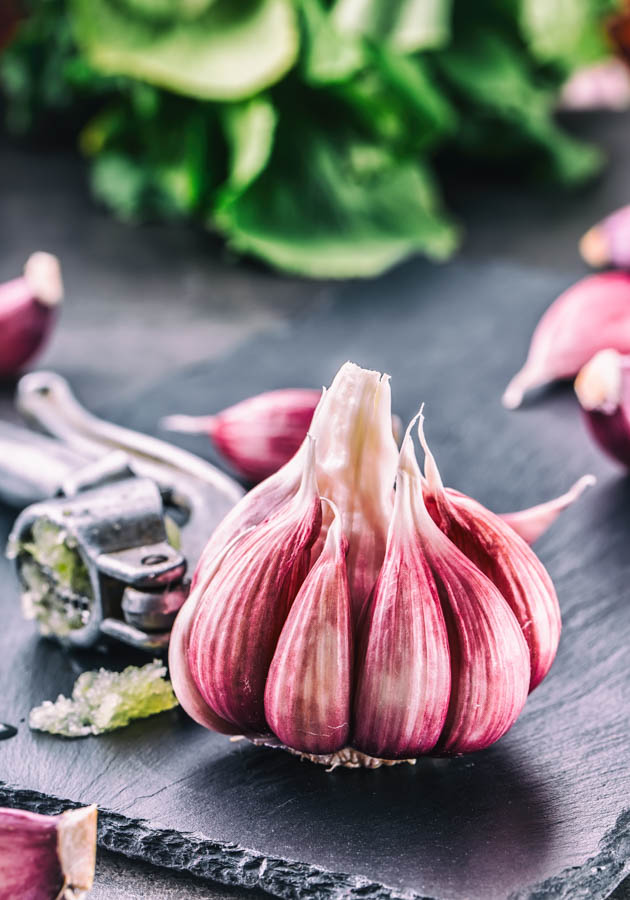Getting Started With Garlic

Garlic is easy to grow. Though it has a long time to maturity, it requires little care during the growing season and takes little space in the garden. A typical gardener with a few square feet of garden space can grow most to all of the garlic his or her family may use in a year. Here are five things to consider before getting started with garlic.
Soil Requirements. With a shallow, inefficient root system, garlic must be planted into well-drained, highly fertile, well-prepared soil with plenty of organic matter. It is capable of growing in a wide range of pH levels; however, garlic prefers slightly acidic soils and grows best in soils with pH of 5.5 to 6.8. Soils that are too heavy can cause bulb deformation. Adequate fertility and nitrogen are particularly important during early growth; the larger the plant before producing a bulb, the larger the final bulbs.
Microclimate. Garlic likes full sun but cool weather when developing foliage, and warm weather when bulbs enlarge. Cloves must be exposed to temperatures below 65° F or may fail to form bulbs when planted. An ideal area will stay sunny from fall through winter and remain evenly moist but not wet after winter rains.
Crop Rotation. Do not plant garlic where other alliums, such as onions, shallots or leeks, have been grown in the past 3 years.
When to plant. Earlier planting means higher yield. In Southern California, garlic should generally be planted in fall for early summer harvest. September to November planting is ideal.
Where to purchase. GardenZeus does not recommend using cloves from the supermarket to start garlic plants. These bulbs may carry diseases or may have been treated to discourage sprouting. GardenZeus recommends purchasing certified disease-resistant bulbs from a quality seed company. Select garlic heads that are firm and tight-skinned, with plump cloves.
To view customized planting information for your area, go to GardenZeus and enter your zip code.
Other articles of interest:
